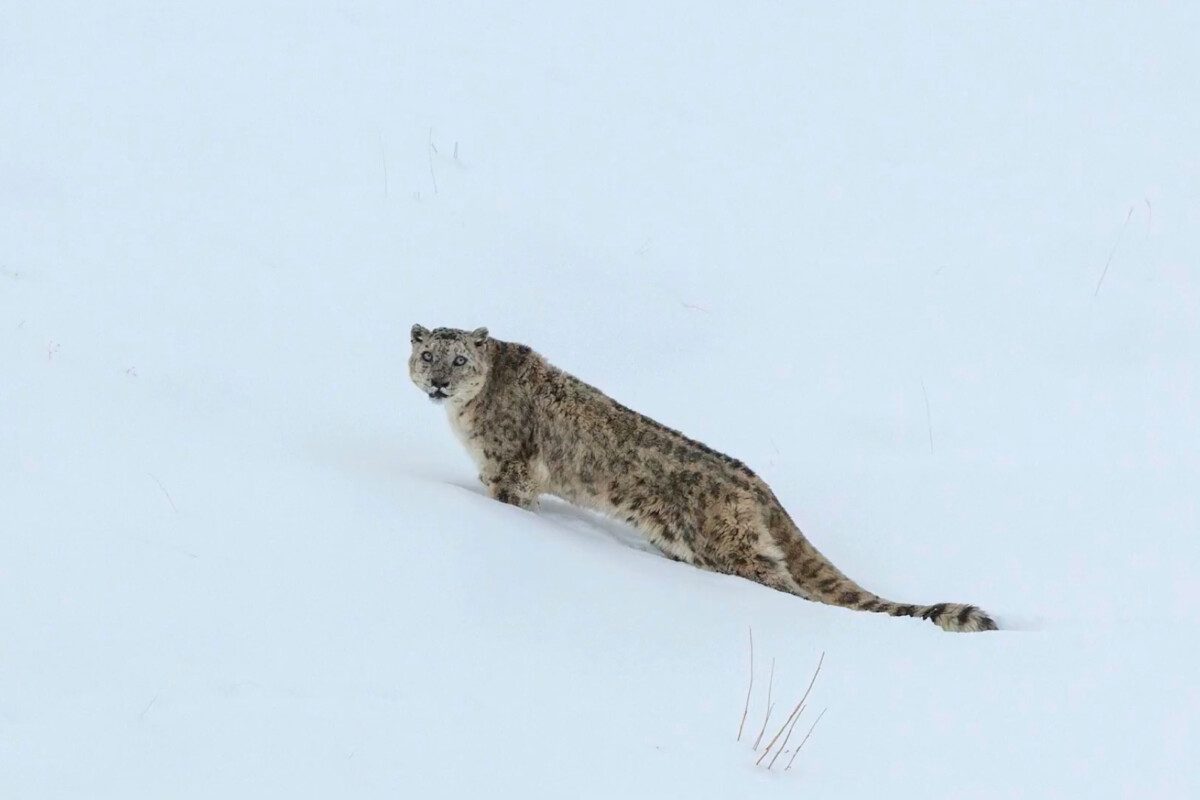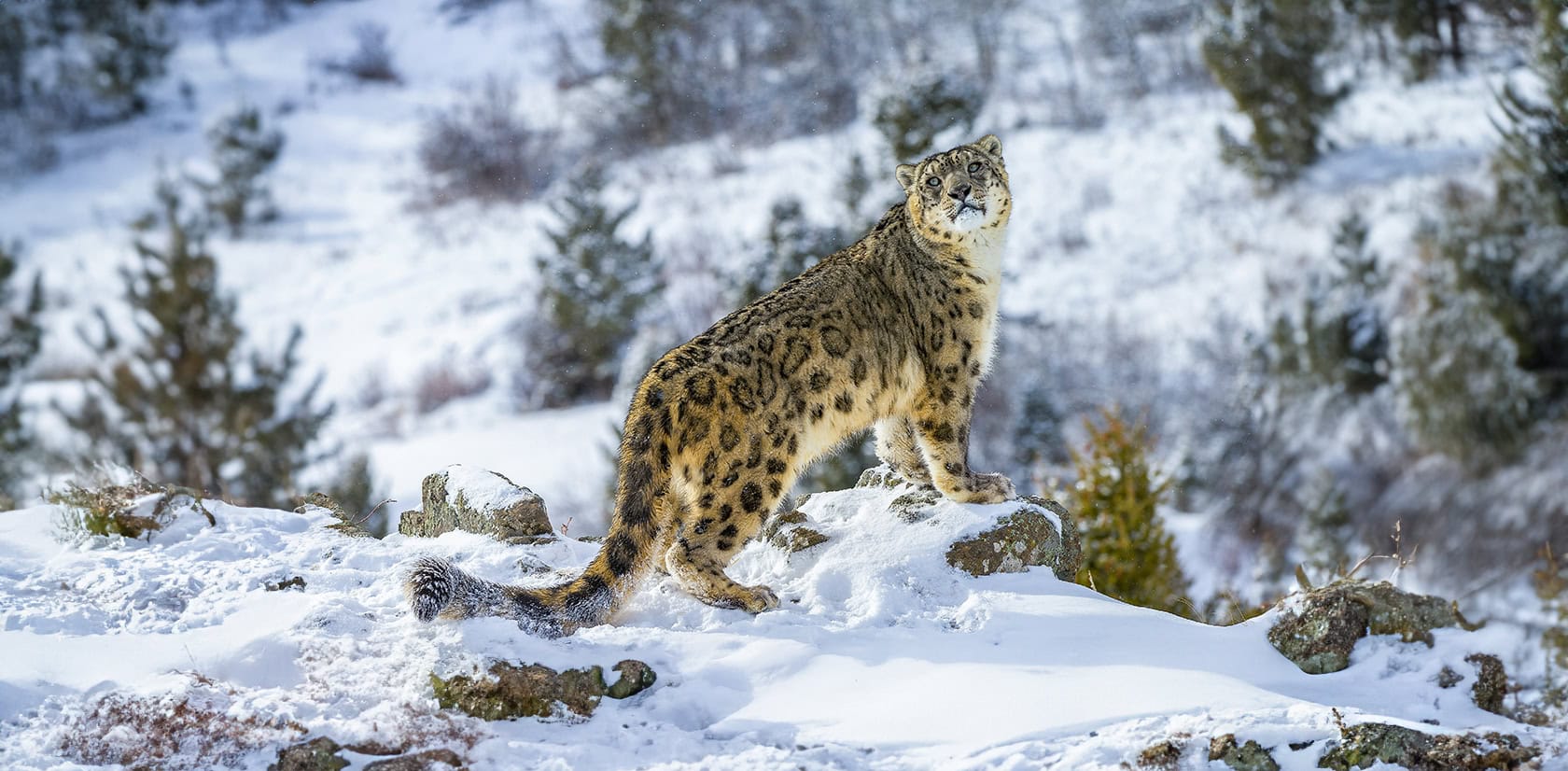
Ladakh Emerges as Prime Habitat for India’s Snow Leopards

A comprehensive study reveals that around 68% of India’s snow Leopards reside in Ladakh. Learn more about the distribution, methods used, and conservation implications. snow leopards, Ladakh, leopards, Himalayan wildlife, India wildlife, Hemis National Park, Nubra Shyok Wildlife Sanctuary, wildlife conservation
India’s Snow, often referred to as the “ghosts of the mountains,” are notoriously difficult to spot due to their elusive behavior and rugged habitats. However, a groundbreaking study conducted in India’s northern Himalayan region has shed new light on their distribution. According to researchers, approximately two-thirds of the country’s snow leopard population lives in Ladakh.
Published by Mongabay India, this extensive study deployed multiple data collection methods across more than 6,000 kilometers (3,700 miles) of challenging terrain. The team relied on identifying physical evidence such as scat, paw prints, and scrape marks. They also utilized 956 strategically placed camera traps, which helped capture images of 126 individual snow leopards.

“This study wasn’t limited to known hotspots or prime habitats,” said Pankaj Raina, a co-author of the study from the Wildlife Protection Department in Leh. “This makes it the largest, most systematic, and most intensive effort ever undertaken across the snow animal range.”
Based on nearly 9,600 snow animal signs and photographic evidence, the researchers estimate that about 477 snow animals inhabit Ladakh. This constitutes roughly 68% of India’s total snow leopard population. The average snow leopard density in Ladakh stands at around 1 per 100 square kilometers, although specific areas such as Hemis National Park and Nubra Shyok Wildlife Sanctuary exhibit much higher densities, reaching up to 3 per 100 km².
The Ladakh region’s high-altitude plateaus, rugged mountain ranges, and cold desert ecosystems offer the ideal environment for snow leopards to thrive. This vast, remote landscape also provides some protection from human disturbances, which has likely contributed to the high concentration of these elusive cats.
According to the Snow Leopard Trust, snow animals are facing increasing threats from habitat loss, poaching, and climate change. Conservationists emphasize that studies like this are crucial for implementing effective protection strategies and for understanding the true extent of their populations across South and Central Asia.
In terms of methodology, the study’s use of modern camera traps and systematic field surveys marks a significant leap forward in wildlife research. Camera traps not only confirmed sightings but also helped researchers identify individual animals based on their unique coat patterns.
Leopards Beyond the Mountains: Expanding the Conservation Conversation
While the snow animal continues to command attention for its mysterious beauty and remote habitat, it is important not to forget its relatives — the broader family of leopards that span across various ecosystems worldwide. Leopards (Panthera pardus) are one of the most adaptable big cats on the planet, with populations scattered across Africa and Asia. Their presence ranges from the savannahs of sub-Saharan Africa to the dense forests of Southeast Asia, and even urban edges in countries like India and Sri Lanka.
Unlike snow animals, which are confined to mountainous regions, leopards have shown a remarkable capacity to coexist near human settlements. This adaptability, however, doesn’t shield them from threats. Poaching, human-wildlife conflict, and habitat fragmentation continue to plague leopard populations. For instance, African leopards are still hunted for their skins, while Indian leopards often fall victim to retaliatory killings due to livestock attacks.
The distinction between animals and snow leopards isn’t just ecological but also conservation-based. While both are listed as vulnerable species, the strategies required to protect them differ. Snow leopards benefit from landscape-level conservation approaches that preserve their remote, high-altitude habitats. In contrast, leopard conservation often focuses on mitigating conflict with humans and maintaining wildlife corridors in fragmented landscapes.
By understanding the challenges and behaviors of all types of animals, including snow leopards, conservationists can build more inclusive strategies that account for the diverse range of threats facing these majestic cats. Resources such as Panthera’s Global Leopard Initiative and the IUCN Red List provide valuable insight into leopard conservation globally.
The study in Ladakh is a reminder of how much we still have to learn about these creatures and how science can drive both awareness and action. Whether in the snowy ranges of the Himalayas or the dry savannahs of Africa, leopards — in all their forms — remain essential to maintaining ecosystem balance and biodiversity.
Conclusion
This landmark study represents a major milestone in snow leopard conservation in India. Ladakh’s role as a sanctuary for the majority of the nation’s snow leopards underlines the importance of preserving this delicate ecosystem. With continued research, community involvement, and government support, there is hope for ensuring that snow leopards — the ghostly predators of the Himalayas — continue to roam these mountains for generations to come.
Table of Contents:
Thanks for reading .for more news please visit our website